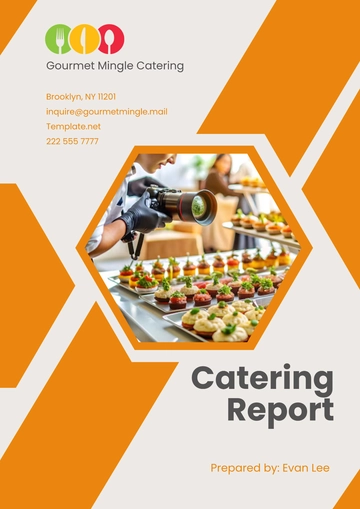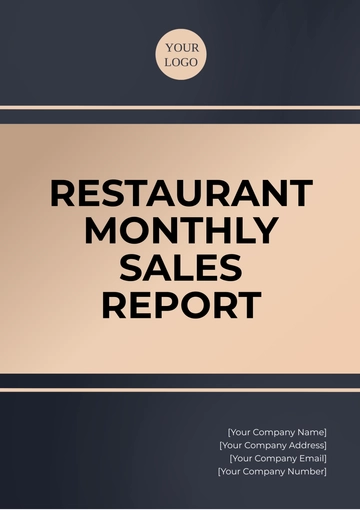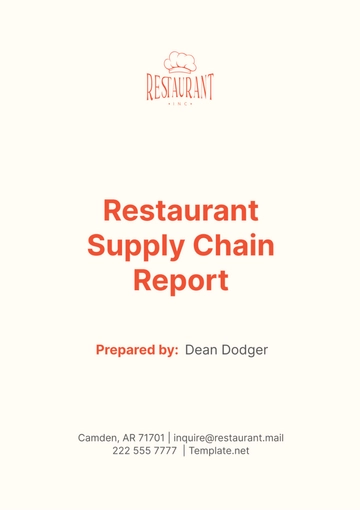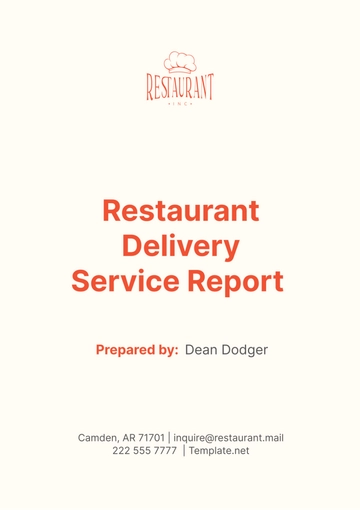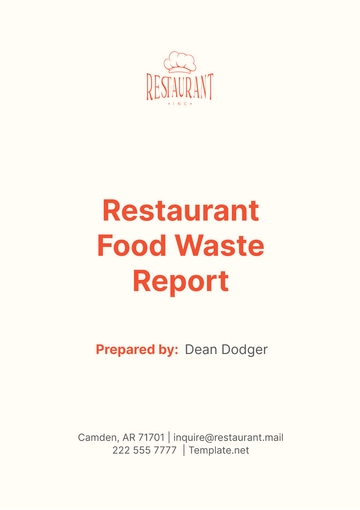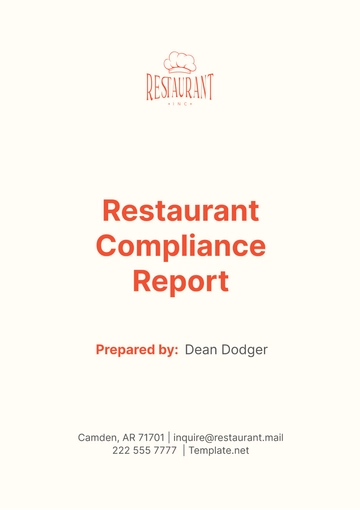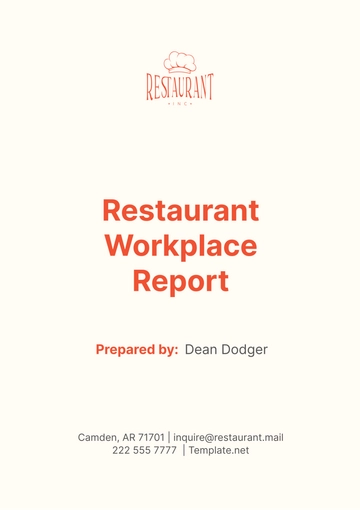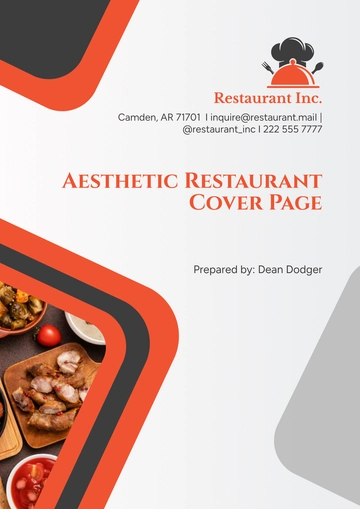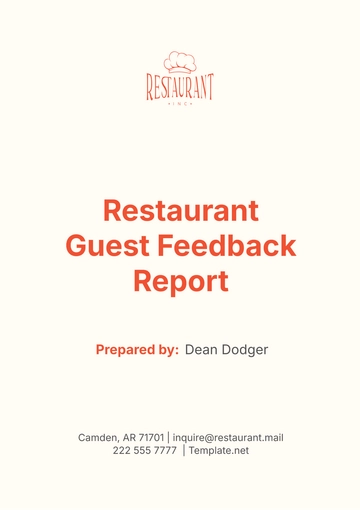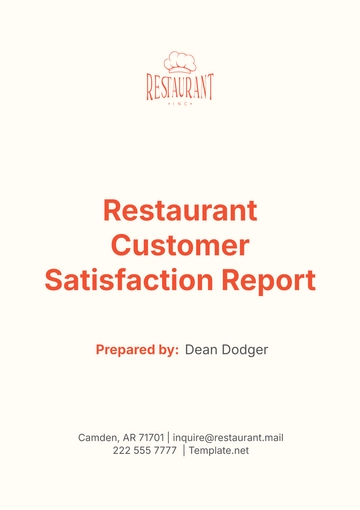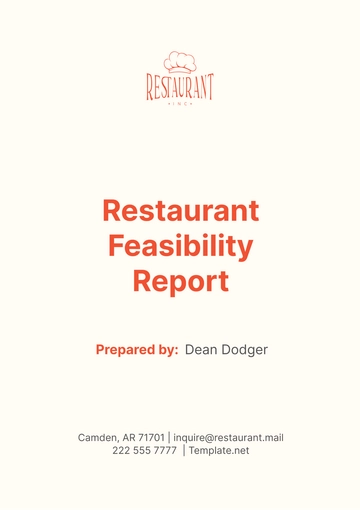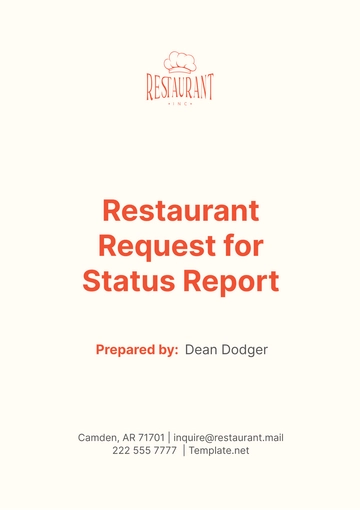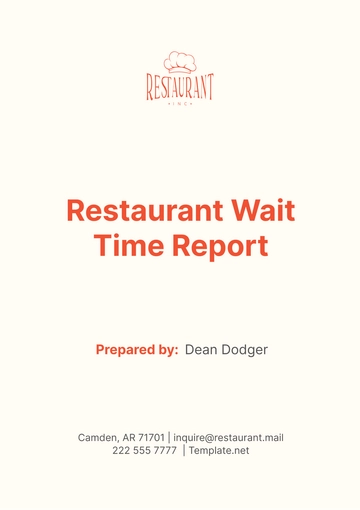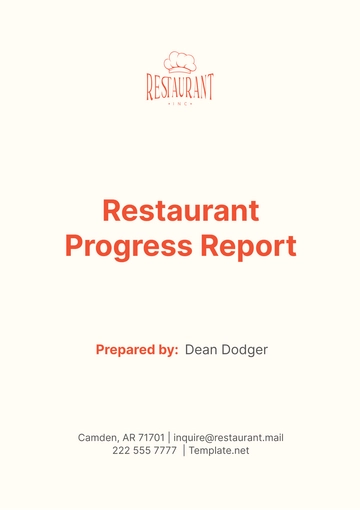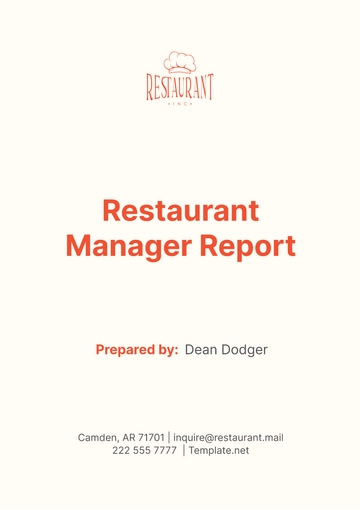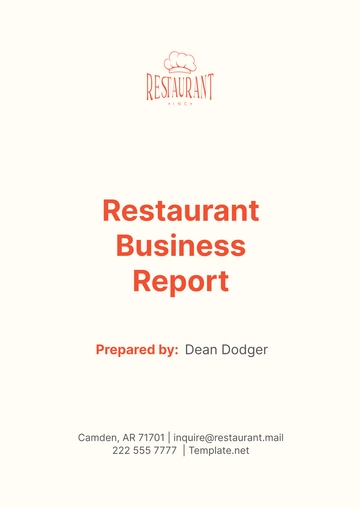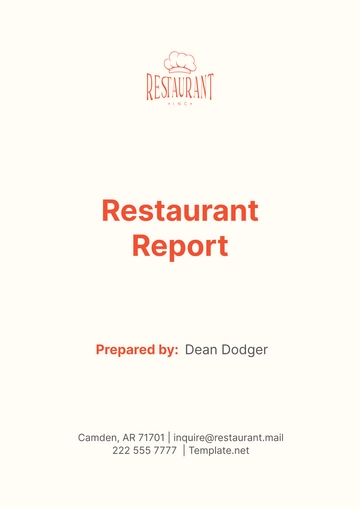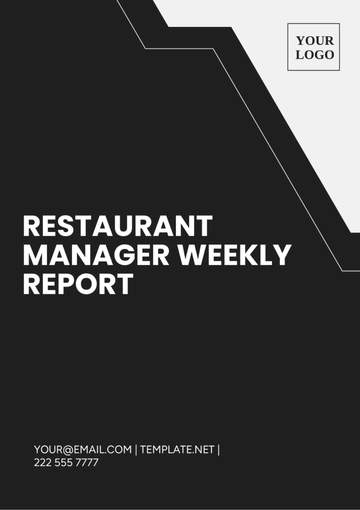Free Restaurant Supply Chain Report
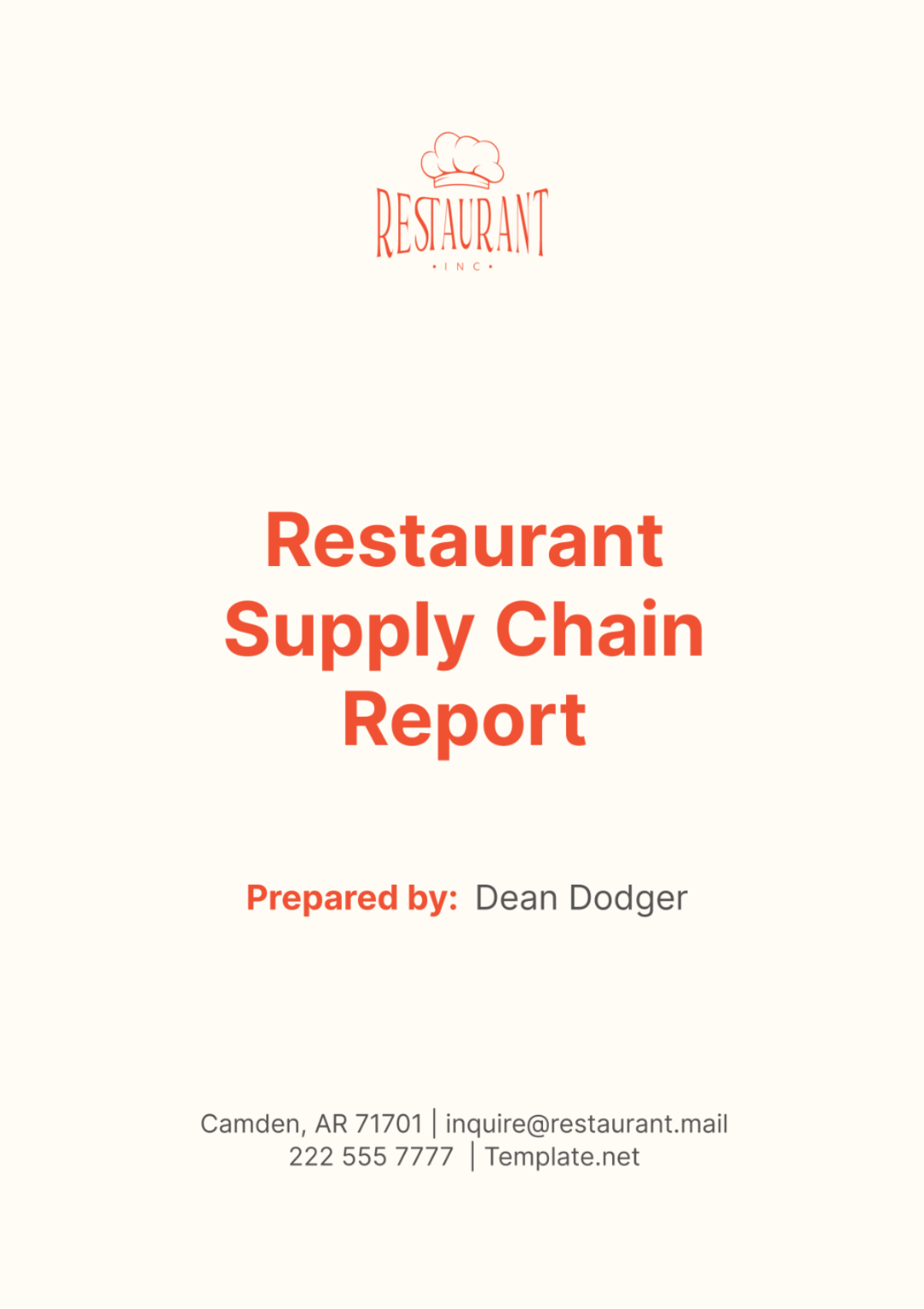
I. Executive Summary
The Restaurant Supply Chain Report provides a strategic overview of our procurement activities, aimed at bolstering efficiency and reducing costs within our operations. This comprehensive analysis evaluates supplier performance, assessing aspects such as punctuality, product quality, and adherence to our environmental standards. Inventory metrics are scrutinized to reveal turnover rates and accuracy in order fulfillment, while predictive analytics forecast future supply demands based on historical data and market trends. Our goal is to refine procurement strategies, thereby enhancing cost-effectiveness and elevating the quality of service delivered to our patrons.
By leveraging detailed data analysis, we have identified key areas for improvement that could potentially decrease our operational expenditures by up to 10%. These findings suggest that optimizing our supplier selection process and negotiating better terms can lead to significant savings. Additionally, adjusting our inventory management practices to better align with consumer demand patterns ensures that capital is not tied up in excess stock, thus improving our cash flow and reducing waste.
Our proactive approach in forecasting and planning for upcoming seasonal fluctuations enables us to maintain optimal stock levels, ensuring that we are fully prepared for peak times without overstocking. This strategic foresight not only prevents potential disruptions in the supply chain but also positions us to take advantage of bulk purchasing discounts and special offers from suppliers. Ultimately, this report aims to serve as a roadmap for achieving a more resilient and cost-efficient supply chain that supports our restaurant's mission of providing exceptional dining experiences.
II. Supplier Performance Analysis
In this section of the Restaurant Supply Chain Report, we delve into the efficacy and reliability of our suppliers through a focused examination of delivery timelines, product quality, and sustainability practices. Our aim is to continuously enhance these facets to ensure the highest level of operational efficiency and alignment with our environmental commitments. The following data provides a detailed breakdown of our current supplier performance metrics.
A. Delivery Time
Our suppliers have maintained an average delivery time of 24 hours, ensuring a swift replenishment of our inventory.
Supplier Name | Expected Delivery Time (hours) | Actual Delivery Time (hours) | On-Time Delivery Rate (%) |
|---|---|---|---|
Supplier A | 24 | 23 | 98 |
Supplier B | 24 | 24 | 100 |
Supplier C | 24 | 25 | 95 |
Average Delivery Time: 24 Hours
B. Product Quality Satisfaction
We have achieved a 97% rate of product quality satisfaction, indicating a high standard of goods received.
Supplier Name | Number of Orders | Satisfactory Orders | Quality Satisfaction Rate (%) |
|---|---|---|---|
Supplier A | 150 | 145 | 97 |
Supplier B | 180 | 175 | 97 |
Supplier C | 200 | 194 | 97 |
Overall Quality Satisfaction Rate: 97%
C. Sustainability Compliance
Currently, 85% of our suppliers comply with our sustainability standards, though there is room for improvement.
Supplier Name | Total Audits | Compliance Success | Compliance Rate (%) |
|---|---|---|---|
Supplier A | 10 | 9 | 90 |
Supplier B | 8 | 7 | 88 |
Supplier C | 12 | 10 | 83 |
Average Compliance Rate: 85%
This analysis highlights our suppliers' strengths in maintaining rapid delivery times and high product quality while also drawing attention to the areas where sustainability practices can be further enhanced to meet our environmental standards.
III. Inventory Metrics
This section critically examines key inventory metrics to assess the effectiveness of our stock management strategies. By analyzing turnover rates and identifying discrepancies between ordered and received goods, we aim to refine our inventory processes. Accurate and efficient inventory management directly contributes to smoother operations and better service delivery in our restaurant. Below, detailed tables offer a precise snapshot of our current inventory performance, highlighting both strengths and areas for improvement.
A. Turnover Rate
Our inventory turnover rate stands at 6 times per year, reflecting the number of times our inventory is sold and replaced annually.
Product Category | Inventory Turnover Rate (times per year) | Industry Average Rate |
|---|---|---|
Dry Goods | 7 | 6 |
Fresh Produce | 12 | 10 |
Dairy | 5 | 4 |
Meat and Poultry | 6 | 5 |
Beverages | 4 | 3 |
Average Turnover Rate: 6.8 Times per Year
B. Discrepancy Rate
There is a 5% discrepancy between ordered and received goods, pinpointing an area where we can enhance accuracy.
Product Category | Orders Placed | Orders Correctly Fulfilled | Discrepancy Rate (%) |
|---|---|---|---|
Dry Goods | 120 | 114 | 5 |
Fresh Produce | 150 | 142 | 5.33 |
Dairy | 100 | 95 | 5 |
Meat and Poultry | 90 | 85 | 5.56 |
Beverages | 110 | 104 | 5.45 |
Average Discrepancy Rate: 5.27%
These tables underline our robust turnover rate, which surpasses industry averages, demonstrating effective inventory usage and replenishment practices. However, the slight discrepancies noted between ordered and received goods highlight an area for targeted improvements, where enhancing verification processes at the receiving stage could mitigate errors and improve overall inventory accuracy.
IV. Future Supply Needs
This section forecasts our restaurant's supply requirements for the upcoming quarter, leveraging historical sales data and considering expected seasonal variations. By predicting future demands, we can optimize our inventory management and procurement strategies to avoid shortages and overstock situations, ensuring a seamless dining experience for our customers. A detailed analysis of anticipated increases in supply needs helps us prepare adequately, aligning our operations with projected business growth.
Projected Increase in Supply Needs by Category
Product Category | Current Monthly Demand (units) | Projected Increase (%) | Anticipated Monthly Demand (units) |
|---|---|---|---|
Dry Goods | 1,000 | 15 | 1,150 |
Fresh Produce | 2,000 | 15 | 2,300 |
Dairy | 1,500 | 15 | 1,725 |
Meat and Poultry | 1,800 | 15 | 2,070 |
Beverages | 1,200 | 15 | 1,380 |
Overall Anticipated Increase: 15%
Supply Adjustment Strategy
To accommodate this 15% increase in demand, our strategy includes enhancing relationships with current suppliers to ensure availability and exploring additional suppliers to diversify our procurement options. We will also implement more rigorous demand forecasting techniques and adjust our inventory holding practices to keep pace with the anticipated higher turnover.
By proactively managing these future supply needs, we are positioning our restaurant to handle increased customer volumes efficiently, ensuring that our service quality remains high even during peak seasons. This approach not only prepares us for upswings in business but also strengthens our supply chain against potential disruptions.
V. Comparative Supplier Analysis
This section presents a comparative analysis of our current suppliers against potential alternatives to evaluate their cost structures and reliability. By exploring options to switch suppliers, we aim to enhance our supply chain efficiency and achieve significant cost reductions. A strategic review has revealed that adopting new suppliers could lead to annual savings of up to 12%, which could substantially impact our bottom line and improve supply chain resilience.
Current vs. Alternative Supplier Cost Comparison
Supplier Type | Average Supply Cost (USD) | Reliability Score (out of 10) | Potential Annual Savings (%) |
|---|---|---|---|
Current Suppliers | 500,000 | 8 | - |
Alternative Suppliers | 440,000 | 9 | 12 |
Potential Savings: 12%
Risk-Benefit Analysis
Factor | Current Suppliers | Alternative Suppliers |
|---|---|---|
Supply Consistency | High | Moderate to High |
Product Quality | Very High | High |
Cost Efficiency | Moderate | High |
Delivery Timeliness | High | Very High |
Strategic Recommendations
Based on the data, while our current suppliers provide excellent product quality and supply consistency, alternative suppliers offer better cost efficiency and potentially improved delivery timeliness. This comparative analysis recommends a phased approach to integrate alternative suppliers into our network, starting with non-critical product categories to test their reliability and service quality. This strategy minimizes risk while exploring the financial benefits of a more competitive supply chain model.
By implementing these changes strategically, we aim to elevate our restaurant’s operational efficiency and profitability, ensuring that we continue to provide excellent service while optimizing our cost structures.
- 100% Customizable, free editor
- Access 1 Million+ Templates, photo’s & graphics
- Download or share as a template
- Click and replace photos, graphics, text, backgrounds
- Resize, crop, AI write & more
- Access advanced editor
Unlock seamless restaurant supply chain management with our professionally designed Restaurant Supply Chain Report Template from Template.net. This highly customizable and fully editable template ensures comprehensive reporting with ease. Editable in our AI Editor Tool, it allows quick adjustments to suit your specific needs. Experience organized, efficient, and accurate reporting. Enhance your workflow and elevate your business today!
You may also like
- Sales Report
- Daily Report
- Project Report
- Business Report
- Weekly Report
- Incident Report
- Annual Report
- Report Layout
- Report Design
- Progress Report
- Marketing Report
- Company Report
- Monthly Report
- Audit Report
- Status Report
- School Report
- Reports Hr
- Management Report
- Project Status Report
- Handover Report
- Health And Safety Report
- Restaurant Report
- Construction Report
- Research Report
- Evaluation Report
- Investigation Report
- Employee Report
- Advertising Report
- Weekly Status Report
- Project Management Report
- Finance Report
- Service Report
- Technical Report
- Meeting Report
- Quarterly Report
- Inspection Report
- Medical Report
- Test Report
- Summary Report
- Inventory Report
- Valuation Report
- Operations Report
- Payroll Report
- Training Report
- Job Report
- Case Report
- Performance Report
- Board Report
- Internal Audit Report
- Student Report
- Monthly Management Report
- Small Business Report
- Accident Report
- Call Center Report
- Activity Report
- IT and Software Report
- Internship Report
- Visit Report
- Product Report
- Book Report
- Property Report
- Recruitment Report
- University Report
- Event Report
- SEO Report
- Conference Report
- Narrative Report
- Nursing Home Report
- Preschool Report
- Call Report
- Customer Report
- Employee Incident Report
- Accomplishment Report
- Social Media Report
- Work From Home Report
- Security Report
- Damage Report
- Quality Report
- Internal Report
- Nurse Report
- Real Estate Report
- Hotel Report
- Equipment Report
- Credit Report
- Field Report
- Non Profit Report
- Maintenance Report
- News Report
- Survey Report
- Executive Report
- Law Firm Report
- Advertising Agency Report
- Interior Design Report
- Travel Agency Report
- Stock Report
- Salon Report
- Bug Report
- Workplace Report
- Action Report
- Investor Report
- Cleaning Services Report
- Consulting Report
- Freelancer Report
- Site Visit Report
- Trip Report
- Classroom Observation Report
- Vehicle Report
- Final Report
- Software Report
